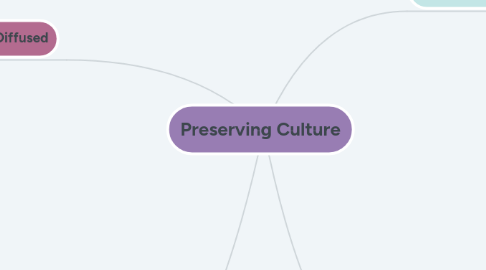
1. How is Pop. Culture Diffused
1.1. Diffusion has been happening quicker since the 20th century.
1.2. Hearths of Pop. Culture
1.2.1. Pop. culture diffuses hierarchically in the context of time space compression,with diffusion happening most rapidly across the most compressed space .
1.2.2. Establishing a Hearth
1.2.2.1. All aspects of pop. culture have a hearth, a place if origin.
1.2.2.2. Hearth typically begins with contagious diffusion.
1.2.3. Replacing Old Hearths With New: Beating Out the Big Three in Pop. Sports
1.2.3.1. Baseball,Football,and Basketball are historically the big three sports in the united states. During the 1800s and the 1900s,they all benefited from advances in transportation technology,communication technology, and institutionalization
1.2.3.1.1. railroads connected cities,the telegraph let newspaper report about score. In the late 1880s electric lighting was made to make baseball a night sport.
1.2.3.1.2. Sports made people make movies,t.v shows,and video games about them therefore making it diffuse.
1.3. At the global scale,North America,western Europe,Japan,India,and South Korea exert the greatest influence on pop. culture at the present.
1.3.1. North Americas Influence are mainly movies,television,music,sports,and fast food.Japan influences are primarily in children's television program,electronic games,and new entertainment technologies. Western Europe's influence are in fashion,television,art,and philosophy. South Korea's influences are in television dramas,movies,and pop music,and India's influence on pop. culture and mainly movies
2. How Can Local and Pop. Culture Be Seen in The Cultural Landscape.
2.1. The tension between globalized pop. culture and local culture can be seen in the culture landscape, the visible imprint.
2.1.1. Culture Landscape begin to blend together,converging culture landscapes in three dimensions: (1) particular architectural forms and planing ideas have diffused around the world. (2) individual business and products. (3) the wholesale borrowing of idealized landscape.
2.2. placelessness is to describe the loss of uniqueness of place in the cultural landscape to the point that one place looks like the next.
2.3. Cultural Landscapes of Local Cultures
2.3.1. Travel is interesting because of the presence of variety in the the cultural landscape.
3. What are local and pop. culture?
3.1. A culture is a group of beliefs systems,norms,and values practiced by people
3.1.1. A group of people who share the same beliefs can be recognized as a culture in one of two ways.
3.1.1.1. 1: the people call themselves a culture 2: other people can label them as culture traditional,
3.2. Folk culture is small,incorporates a homogeneous population is typically rural and is cohesive in culture traits.
3.3. Pop. culture is large incorporates heterogeneous populations, is typically urban, and experiences quickly changing culture traits.
3.4. Local culture is a group of people in a particular place who see themselves as a collective or a community, who share experiences,customs,and traits, and who work to preserve those traits and customs in order to claim uniqueness and to distinguish themselves for others.
3.5. Material culture is a group of people includes things they construct, such as art,,houses,clothing,sports,dance,and foods.
3.5.1. Non-material culture includes beliefs,practices,aesthetics, and values of a group of people.
3.6. In pop. culture, fashion trends spread quite quickly through the interconnected world, this is a classic case of hierarchical diffusion.
4. How are local cultures sustained?
4.1. Culture appropriation is the process of which other cultures adopt and knowledge and use them for there own benefits.
4.2. Rural and Local Cultures
4.2.1. Members in local cultures in rural areas often have an easier time maintaining their cultures because of their isolation.
4.3. The Makah American Indians
4.3.1. In the late 1990s they reinstated the whale hunt.
4.4. Urban and Local Cultures
4.4.1. Some local cultures have successfully built a world apart a place to practice their customs within a major city by constructing tight-knit ethnic neighborhoods.
4.4.1.1. Having their own ethnic neighborhood enables members of a local culture in an urban area to set themselves apart and practice their own customs.
4.5. Local Cultures and Culture Appropriation
4.5.1. Local cultures, weather rural or urban often find it hard themselves trying to keep their customs for themselves, to prevent themselves trying to keep others from appropriating their customs.
